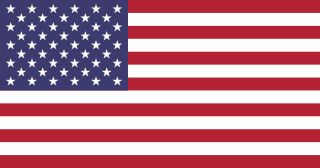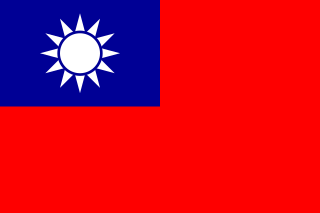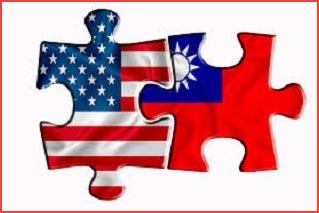
|


Commentary
In consideration that the SFPT did not award the territorial sovereignty of Taiwan to the ROC, it is impossible to conclude that the ROC is exercising sovereignty over Taiwan. Indeed, this is exactly what the above Feb. 8, 1955 Report of the US Senate's Committee on Foreign Relations is specifying.
In other words, . . . . .
The SFPT did not award territorial sovereignty of Taiwan to the ROC, and the coming into force of Mutual Defense Treaty does not change that fact.
However, based on these considerations, why is there a Republic of China government structure in Taiwan? This is the question that the Senate's Committee on Foreign Relations did not answer. Below, various points of clarification are given in order to enable us to arrive at an answer to this question.
Background Information
In regard to Taiwan, in General Order No. 1 of Sept. 2, 1945, (Supreme Commander) General Douglas MacArthur directed the military troops of Chiang Kai-shek to handle the surrender ceremonies and subsequent administration.
However, in regard to the disposition of Taiwan territory in the post-WWII period, the highest ranking document of international law, and of United States law, is the San Francisco Peace Treaty (SFPT) of April 28, 1952. In the SFPT, Japan renounced Taiwan's territorial sovereignty, however the Treaty did not award (transfer, assign, grant, give, cede) that territorial sovereignty to the ROC. Moreover, the signatories did not award or delegate any role for the ROC to play in the governance of Taiwan after April 28, 1952.
Clearly, the content of General Order no. 1 authorized the ROC regime under Chiang Kai-shek to establish a presence in Taiwan, including the administration of the island for some period of time. However, in recognition that the SFPT does not (a) mention or (b) confirm any relevant continuing authorization, and (c) this treaty did not transfer the territorial sovereignty of Taiwan to the ROC regime under Chiang Kai-shek, therefore the arrangements for this ROC regime to be in Taiwan (as specified in General Order no. 1) must be considered to have been cancelled by the SFPT. |
Point of Clarification #1
The Mutual Defense Treaty signed between the United States and the Republic of China on Dec. 2, 1954, and which entered into force on March 3, 1955, has some important details in Article 6, specifying that:
" . . . . . the terms ‘territorial’ and ‘territories’ shall mean in respect of the Republic of China, Taiwan and the Pescadores: and in respect of the United States of America, the island territories in the West Pacific under its jurisdiction."
Nevertheless, a close examination of the content of the SFPT shows that Article 4(b) stipulates the jurisdiction of a US federal agency, the United States Military Government (USMG), over both Taiwan and the Ryukyu islands. This fact is further confirmed by noting that the United States of America is identified as "the principal occupying power" in Article 23(a).
In the practice of the United States, the term "military government" means the form of administration by which an occupying power exercises government authority over occupied territory.
Hence, the correct interpretation of MDT Article 6 appears to be that Taiwan (aka "Formosa and the Pescadores") is under a two-tiered jurisdiction of the United States and the ROC.
Point of Clarification #2
- In the SFPT, Japan renounced Taiwan's territorial sovereignty, however the Treaty did not award (or otherwise transfer) that territorial sovereignty to the ROC. Moreover, there are no clauses in the Treaty which can be interpreted to say that the signatories were authorizing or delegating any role for the ROC to play in the governance of Taiwan after April 28, 1952. In other words, the SFPT has not authorized the ROC to stay in Taiwan, or to continue playing the part of "the legal government of Taiwan."
- However, some people disagree with this viewpoint and point to SFPT Article 6(a), asserting that if the ROC is merely an occupying power in Taiwan, it would have had to leave the island by the end of July 1952.
Article 6
(a) All occupation forces of the Allied Powers shall be withdrawn from Japan as soon as possible after the coming into force of the present Treaty, and in any case not later than 90 days thereafter . . . . . .
- Continuing on with their Article 6 analysis, they then use a reverse-logic formulation to say that since the ROC didn't leave Taiwan after July 1952, it must be the legitimate government of Taiwan.
However, with the coming into force of the SFPT on April 28, 1952, Taiwan immediately became separated from Japan. Hence, Article 6(a) has no relationship to Taiwan territory whatsoever. In other words, Article 6(a) cannot be used to justify the status of the ROC as a legitimate government for Taiwan. |
- In an attempt to clear up all misunderstandings, a press conference was held in the US Dept. of State in late April 1971, and a DOS spokesperson stated: "Now, we regard the Republic of China as exercising legitimate authority over Taiwan and the Pescadores by virtue of the fact that ROC forces had accepted the surrender of [Japanese troops in] Formosa [in the Fall of 1945] on behalf of the victorious allies." Turning to one reporter in the audience, this spokesperson added, "And, to answer the question about why we have relations with a government whose sovereignty may be in question, it is on the basis that the Republic of China exercises legitimate authority on Taiwan and the Pescadores."
- In a subsequent Starr Memorandum, issued by the Dept. of State on July 13, 1971, the following facts were confirmed:
- (a) there was no transfer of Taiwan’s territorial sovereignty to China on Oct. 25, 1945, and
- (b) there was no transfer of Taiwan’s territorial sovereignty to China in the post war San Francisco Peace Treaty (SFPT).
Point of Clarification #3
- However, in order to understand this "exercise of legitimate authority" topic more thoroughly, the compilers of this website undertook an historical overview and comparative study, in order to better understand the intricacies of the "exercise of legitimate authority" over various geographic areas in their respective post-war eras. Included in this study were the Dutch East Indies, Guam, Wake Island, Attu and Kiska Islands, Singapore, Denmark, Norway, Mexico City, Castine (Maine), Tampico (Mexico), and French Indo-China.
- After thorough examination, it was found that the key criterion in the determination of an "exercise of legitimate authority" in the post-war period is not that the military forces of whichever country accepted the surrender of enemy troops on behalf of itself and/or its allies some time previously. The key criterion is that the territory was ceded to a particular country in the final peace treaty [or peace settlement].
- Hence, the compilers of this website are forced to conclude that the Dept. of State’s determination, as given in the statement of late April 1971, is totally incorrect. For more details, see -- The Exercise of Legitimate Authority.
Point of Clarification #4
- As a result of such investigations, some astute observers have concluded that the best explanation is to recognize that the Republic of China is serving as an agent for the United States in governing Taiwan.
- In the SFPT, the role of the United States is confirmed as "the principal occupying power," hence it would appear that the role of the ROC is best described as being a subordinate occupying power or "proxy occupying forces."
Such an interpretation supports the contention that the role of the ROC in Taiwan is that as agent for the United States.
- Hence, as postulated above, it strongly appears that over the last seventy years Taiwan has remained under a two-tiered jurisdiction of the United States and the ROC.
- Such an interpretation presents a reasonable explanation of why the ROC has remained in Taiwan after late April 1952, despite the lack of a specific treaty provision. At the same time, this interpretation fully complies with the content of Article 6 of the 1955 Mutual Defense Treaty.
- Note: The MDT was cancelled effective Jan. 1, 1980, however the Taiwan Relations Act (TRA) had already come into force on Jan. 1, 1979. Notably, the TRA also fails to offer any answer to the question of why the Republic of China regime continues to remain in Taiwan.
(Some persons are very confused about certain items of wording in the TRA, and this is explained more thoroughly below.)
Other Theories
- When asked about the legal status of the ROC in Taiwan, it is easy to find a wealth of academic papers and media reports which propound the viewpoints that
- (A) up through Dec. 31, 1978, the ROC was recognized as exercising sovereignty over Taiwan in the name of the "Republic of China;" . . . . . then
- (B) beginning Jan. 1, 1979, under the Taiwan Relations Act, the ROC was recognized as exercising legitimate authority over Taiwan in the name of the "Taiwan Governing Authorities."
- However, both of these viewpoints are incorrect. For
- (A), it is a gross misinterpretation of international law to claim that there was any transfer of Taiwan's territorial sovereignty to the ROC on the Oct. 25, 1945, the date of the Japanese surrender ceremonies. Moreover, the ROC did not obtain Taiwan's territorial sovereignty based on the content of the post-WWII SFPT. For
- (B), it is incorrect to equate the Republic of China government structure with the "Taiwan governing authorities."
- The true meaning of the terminology of "Taiwan governing authorities." is explained in a separate webpage. Please see -- ROC vs. TGA
Conclusion: An interpretation based on "agency" provides the best answer to the question of why the ROC has remained in Taiwan after late April 1952.
See further analysis in ROC Agency.
[Chinese version] https://www.twdefense.info/trust3/treaty-mutualch.html


